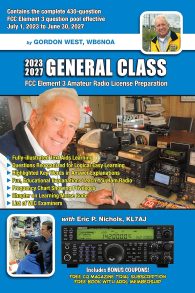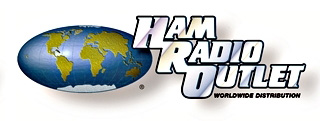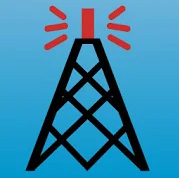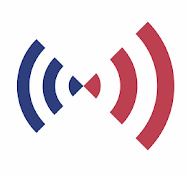How About Some Thanksgiving Recipes From KI5NPL?
Welcome to the World of Ham Radio!
Welcome to the site! Ham Radio for Non-Techies purpose is to help out new ham radio (Amateur Radio) operators and those who are thinking about getting into ham radio to better understand all of the facets of the hobby/art. It can be quite confusing for someone having never heard about ham radio before or just trying to dive into the hobby for the first time. There are a plethora of new terms related to ham radio as far as equipment, procedures, protocols and so forth.

Some of the most asked questions in Ham radio are:
- Do I need a license to use a ham radio?
- How do I go about getting a license?
- Are the tests hard?
- Once I am licensed, where do I start?
- What is a good radio to start with?
- Do I need a bunch of antennas?
- What other things can you do with ham radio?
These and many more questions are most commonly asked and we will try to give you the best answers and the most accurate information in a manner that you can easily follow and understand.
OK, I am Interested, where do I start?
The best way is to start at the beginning. You will need a little study and you will need to go take the first test, which is Technician. This is the easiest of the three tests available. This will cover the procedures and protocols of ham radio as well as give you insight on what frequencies you can use as well as the do’s and don’t’s with that level of license.
Once you take and pass the Technician license test, the FCC will issue you your “Call Sign”. At that point you can hop on the radio, find a frequency that is within your license permissions and start talking to others and start learning more.
If you are up for it, you can choose to take the other two class license tests which are General and Extra. It is not required to take the remaining tests unless you wish to unlock the privilege’s that having a license in those classes affords to you. Even just upgrading your license to General opens up a bunch of new frequencies to you including a lot of the HF (high Frequency ) bands. With HF, and the right equipment, you can reach people around the world when the conditions in the atmosphere is favorable.
There are Three Classes of Ham License Operators
TECHNICIAN
This is the first level for ham radio Licensing. This will teach you the basics and what you can and can't do within this class. This will get you on the radio!
GENERAL
This is the second level of ham radio Licensing. In this level, you will learn more about frequencies, wavelengths, components and more details on this license class privilege's. General opens up a lot more frequencies to you.
AMATEUR EXTRA
The final license level for Amateur Radio. This is much more technical and covers the remaining criteria to give you all available frequencies and privileges afforded to you with this final exam
Books to Help You Study for Your Ham License
Technician Study Books (Click the images to purchase the books)

UPDATED FOR 2022-2026
This series of books is a no nonsense approach to learning the questions and answers for the test, however, it doesn’t give a lot of explanation and detail about what you are learning. If you want to take the test fast and pass, then this route is for you.

UPDATED FOR 2022-2026
The Gordon West series of books to study for your Ham license are among the most read books on the topics. These books give you great insight and the how and why of what you are learning when studying for your Ham license. If you are more technical , this is the book for you.

From the main organization that advocates for Ham Radio in the United States, the ARRL books are the original study manuals for learning and studying for your Ham Technician license. This book goes in-depth and is very detailed. Might be harder to follow for first timers, but still a great resource.
General Study Books (Click the images to purchase the books)

UPDATED FOR 2023-2027
This series of books is a no nonsense approach to learning the questions and answers for the test, however, it doesn’t give a lot of explanation and detail about what you are learning. If you want to take the test fast and pass, then this route is for you.

UPDATED FOR 2023-2027
The Gordon West series of books to study for your Ham license are among the most read books on the topics. These books give you great insight and the how and why of what you are learning when studying for your Ham license. If you are more technical , this is the book for you.

From the main organization that advocates for Ham Radio in the United States, the ARRL books are the original study manuals for learning and studying for your Ham General license. This book goes in-depth and is very detailed. Might be harder to follow for first timers, but still a great resource.
Amateur Extra Study Books (Click the images to purchase the books)

NOTE: New Question Pool Coming in 2024
This series of books is a no nonsense approach to learning the questions and answers for the test, however, it doesn’t give a lot of explanation and detail about what you are learning. If you want to take the test fast and pass, then this route is for you.

NEW EXTRA POOL COMING MID-2024
The Gordon West series of books to study for your Ham license are among the most read books on the topics. These books give you great insight and the how and why of what you are learning when studying for your Ham license. If you are more technical , this is the book for you.

From the main organization that advocates for Ham Radio in the United States, the ARRL books are the original study manuals for learning and studying for your Ham General license. This book goes in-depth and is very detailed. Might be harder to follow for first timers, but still a great resource.
Online Resources to Help you Study and Take Practice Exams for your Ham Radio License
HAMEXAM.org
Must Sign Up for Free Account
- Practice Tests for All Three Exams
- Flash Cards
- Question Pool
HAMSTUDY.org
Must Sign Up for Free Account
- Practice Tests for All Three Exams
- Study Mode
Assuming You Just Passed Your Exam and You Are Now A Ham Radio Operator...What Now?
Congratulations! You’ve passed the ham radio exam, received your license and call sign, and now you’re ready to embark on new adventures in a brand new world. While I may not know you on a personal basis, I and many others welcome you to the art of ham radio. As you get ready to take your first steps in this hobby remember that we are all amateurs and we’re all constantly learning. Now, we we need to get you on the air!
When I got my license I had a ton of questions as you probably have a lot of questions now. It could be that you might not even know what questions to ask yet. So, as a licensed ham radio operator, where do you start in a hobby with so many facets to it? It really depends a lot on YOU! Where do you want to start? What budget do you have for equipment? What type of radio do you want to start with? These are questions only you can answer. However, I can point you in a general direction that would be a good start.
To find the status of your license and to get your call sign, you can go to this link and check by searching by your FRN number or Name: CLICK HERE
A few days after your exam, the FCC will send you an email with a link. Follow that link will lead to the FCC site and a PDF copy of your license will be there for you to download and print.
The first thing you should do is buy a radio. That can be confusing as there are many types of radios to choose from. You have Handheld radios (or HT’s), you have mobile radios (for your car, although some can be used as a base station in your home) and you have actual base station radios.
HT’s will be a good cheap intro in to HAM radio. An HT can run between $50 – $500 depending on brand, features and budget. That is up to you and your finances. When I started out, I bought a nice upgraded HT from the normal radios that I saw a lot of others buy. It ran me about $110, but much better build and more rugged for my uses. I added a $20 upgraded antenna and voila, I was up and running. If you are on a tight budget, I would still spend the $110 for the Wouxun UV8D Plus.
Of all the Chinese radios available today, I think you will be very happy with the build quality and features of this radio over the Baofeng line of Chinese radios. They are rugged, reliable and this model comes with a battery upgrade that previous models didn’t have. Like I said, the choice in the end will be up to you and your budget.
If money is no object, then I would go for a Yaesu FT-5DR. It is packed with features, it has a full color touch screen. It is considered a top-of-the-line radio made in Japan by a well-respected radio manufacturer that has been around a long time.
I have only given two examples fo the hundreds of radios that are available to you on the market. Research features you want to have and go with the best bang for the buck.
In my video on Getting Your HAM Radio License, I discuss how to find a HAM Radio club near you to get tested. Well this same club would be the one to join if they are local to you. They should have some sort of a contact page where you can get in touch with someone and find the details on the local Net they hold and when and what frequency they transmit on. My local club has a daily net that started last year in 2020 called the Stir Crazy Net. Every day at Noon, HAM’s are encouraged to check in with their call sign and a topic of discussion is chosen and each person has a moment in the spotlight to express their opinion on the topic of discussion. It is good practice for getting used to using your radio and it will allow you to listen and learn the protocols that your local club uses on the air.
Do not worry about saying the wrong thing. They are very happy to have newly licensed HAM’s on the air to begin with and will assist you in any way they can most of the time. I freaked out the first time giving my call sign, especially because I was trying to use the phonetic alphabet to identify myself, but they were really cool about it and now I am on two to four times a week chatting it up with my fellow HAM’s in my area. They have been nothing but helpful and giving me good solid advice. You will have a similar experience. Either way, get you and your radio on the air and start using that thing. The only way to learn is to take action, even if it is imperfect action. You will get the hang of it very quickly.
Not much to say that I did not say above, except to say that joining a club will give you a ton of experience at your fingertips from those who have been in the hobby for decades. It will expose you to new equipment, skills for various projects that HAM radio can lead to and a comradery that will serve you for years to come. Club memberships are usually pretty inexpensive and you will learn a lot.
I am glad you asked that. HAM radio is made for the enjoyment of all that participate in it. There are a few rules that you may or may not know. However, instead of explaining them all here, I have a page I created for HAM Radio Tips and Tricks. This will give you a good jump start on general practices when using your radio.
ABSOLUTELY! I created a “cheat Sheet that you can download for FREE that will give you some basics on HAM Radio and give some visual explanations of a few things as a quick reference. CLICK HERE TO GET THE CHEAT SHEET
So Where Can You Get Ham Radio Gear?
What Are some Other Apsects of Ham Radio that I can get into?
That is almost a loaded question because there are so many areas in Ham Radio that you can get involved in that it could blow your mind. Below is just a partial list of what you can do:
DMR
Digital Mobile Radio (DMR) is an international digital radio standard developed by the European Telecommunications Standards Institute (ETSI), and first ratified in 2005. More than a decade ago, vendors and users of radio systems recognized that the existing analog trunking standards required updates with modern techniques to provide improved voice quality, functionality such as Location information, security (i.e. Authentication and Encryption), channel efficiency.
Register your callsign with DMR:
SDR
Software-defined radio (SDR) is a radio communication system where components that have been traditionally implemented in hardware (e.g. mixers, filters, amplifiers, modulators/demodulators, detectors, etc.) are instead implemented by means of software on a personal computer or embedded system. While the concept of SDR is not new, the rapidly evolving capabilities of digital electronics render practical many processes which were once only theoretically possible.
A basic SDR system may consist of a personal computer equipped with a sound card, or other analog-to-digital converter, preceded by some form of RF front end. Significant amounts of signal processing are handed over to the general-purpose processor, rather than being done in special-purpose hardware (electronic circuits). Such a design produces a radio which can receive and transmit widely different radio protocols (sometimes referred to as waveforms) based solely on the software used.
VHF/UHF
The two most commonly used bands in the VHF/UHF region are 2 m and 70 cm. These bands are home for lots of FM repeaters, FM simplex, SSB simplex and plenty of other modes. Common dualband transceivers, both mobile and handheld, operate on the 2m and 70cm bands. These radios are so common that we often refer to them as VHF/UHF dualband radios. Accordingly, you will often hear hams refer to the 2m band as simply VHF and the 70 cm band as UHF, as if VHF means 2 meters and UHF means 70 cm. The 2m band is certainly VHF but VHF does not always mean 2 meters. Similarly, we might say “I’ll call you on the UHF repeater” when it would be more precise to say “I’ll call you on 440 MHz.”
HF Radio
HF (3-30 MHz) radio waves propagate either as line-of-sight (space) or sky waves. Sky waves are the most useful to understand because they provide the longest geometric range possible (independant of transmitted power). The reason is simple: assuming propagation in a straight line, if the signal reflects off something at a significant altitude the maximum range is extended. Usually the straight line distance is limited by the horizon (the point where the straight line path is tangent to the earth). A sky wave can extend the propagation path well beyond the visible horizon.
Wires X/System Fusion
WIRES (Wide-coverage Internet Repeater Enhancement System) is an Internet communication system which expands the range of amateur radio communication. For WIRES-X, an amateur node station connecting to the Internet is used as the access point and connects the wireless communication to the Internet. Users’ stations can communicate with other amateur stations all over the world using a node within the radio wave range.
APRS
Automatic Packet Reporting System (APRS) is an amateur radio-based system for real time digital communications of information of immediate value in the local area.Data can include object Global Positioning System (GPS) coordinates, weather station telemetry, text messages, announcements, queries, and other telemetry. APRS data can be displayed on a map, which can show stations, objects, tracks of moving objects, weather stations, search and rescue data, and direction finding data.
APRS data is typically transmitted on a single shared frequency (depending on country) to be repeated locally by area relay stations (digipeaters) for widespread local consumption. In addition, all such data are typically ingested into the APRS Internet System (APRS-IS) via an Internet-connected receiver (IGate) and distributed globally for ubiquitous and immediate access. Data shared via radio or Internet are collected by all users and can be combined with external map data to build a shared live view.
APRS has been developed since the late 1980s by Bob Bruninga, call sign WB4APR, currently a senior research engineer at the United States Naval Academy. He still maintains the main APRS Web site. The initialism “APRS” was derived from his call sign.
EchoLink
EchoLink® software allows licensed Amateur Radio stations to communicate with one another over the Internet, using streaming-audio technology. The program allows worldwide connections to be made between stations, or from computer to station, greatly enhancing Amateur Radio’s communications capabilities. There are more than 300,000 validated users worldwide — in 151 of the world’s 193 nations — with about 6,000 online at any given time.
Once you have your call sign, you can sign up for echolink for free and use it! You can sign up HERE
WINLINK
Winlink is a Global Radoi Email system or message system that allows you to send and receive messages between other licensed amateur radio operator through the radio or the internet. Go to https://winlink.org/ and download the Winlink Express Software. Make sure to register for a FREE account so the software will work.
R.A.C.E.S.
Do you like storm-watching? Find a Skywarn class near you and attend. They are usually free. Find a R.A.C.E.S or ARES sector in your area, and email or call them about membership and getting started.
ARES
The Amateur Radio Emergency Service® (ARES) consists of licensed amateurs who have voluntarily registered their qualifications and equipment, with their local ARES leadership, for communications duty in the public service when disaster strikes.
Fill out the ARES Registration form and submit it to your local Emergency Coordinator.
Red Cross
The Red Cross uses radio operators in times of emergency for communication. You have to take a 2-3 hour orientation class to join. Then you can sign up for various duties.
DX
DXing is the hobby of receiving and identifying distant radio or television signals, or making two-way radio contact with distant stations in amateur radio, citizens’ band radio or other two-way radio communications. The name of the hobby comes from DX, telegraphic shorthand for “distance” or “distant”.
DStar
D-STAR (Digital Smart Technologies for Amateur Radio) is a digital voice and data protocol specification for amateur radio. The system was developed in the late 1990s by the Japan Amateur Radio League and uses minimum-shift keying in its packet-based standard. There are other digital modes that have been adapted for use by amateurs, but D-STAR was the first that was designed specifically for amateur radio.
Several advantages of using digital voice modes are that it uses less bandwidth than older analog voice modes such as amplitude modulation and frequency modulation. The quality of the data received is also better than an analog signal at the same signal strength, as long as the signal is above a minimum threshold and as long as there is no multipath propagation.[citation needed]
D-STAR compatible radios are available for HF, VHF, UHF, and microwave amateur radio bands. In addition to the over-the-air protocol, D-STAR also provides specifications for network connectivity, enabling D-STAR radios to be connected to the Internet or other networks, allowing streams of voice or packet data to be routed via amateur radio.
D-STAR compatible radios are manufactured by Icom, Kenwood, and FlexRadio Systems.
AMSAT - Satellites
AMSAT is a worldwide group of Amateur Radio Operators who share an active interest in building, launching and then communicating with each other through non-commercial Amateur Radio satellites. By any measure, AMSAT’s track record has been impressive. Since its initial founding, over 25 years ago, AMSAT has used predominantly volunteer labor and donated resources to design, construct and, with the added assistance of government and commercial space agencies, successfully launch, over two dozen Amateur Radio communications satellites into Earth orbit.
Become a VE
Remember the guy or gal that administrated your HAM Radio test? Those are VE’s, or Volunteer Examiners. You can sign up to become a VE and help others get their HAM Radio license. If you have the time and the willingness to do this, it is a way to give back to the HAM community.
Ham Radio Apps for your Phone

APRSDroid - $4.95
APRS application for HAM Radio operators. It allows reporting your position as well as sending and receiving messages.

HAMRS APP - FREE/$4.99
HAMRS is a portable logging app to help you keep track of your contacts during POTA, Field Day and more. It is packed with features that you will appreciate having. Free for Windows and other desktops, however the app is $4.99 for Android, IOS and Amazon
Next Up: Ham Radio For Non Techies Videos











